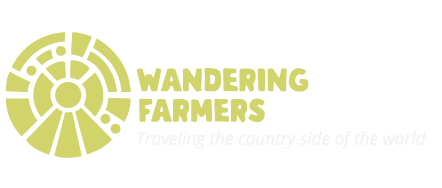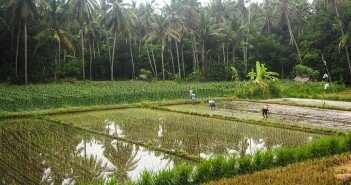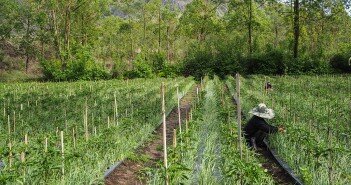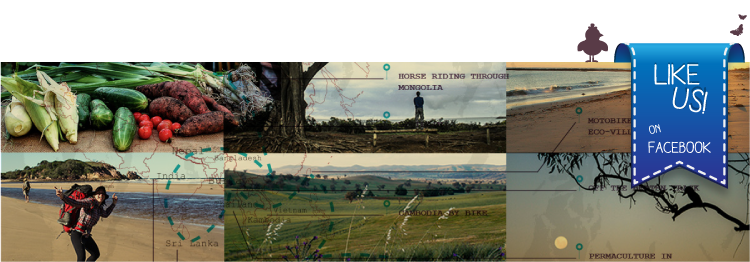When it comes to writing a Marketing strategy for your farm it is always daunting especially if you have no previous experience in marketing. On the Internet you’ll find many advices on setting up a marketing plan. It usually involves writing down a vision for your farm, identifying your market by describing a potential customer as well as identifying your strengths and threats in relation to your location, products, competition and so on.
Though the most important element is often forgotten and that is research. Research is probably the single most important part of setting up a business and writing down a marketing strategy. Research is probably an even scarier exercise than writing down a vision or describing a potential customer but it does not have to be this way.
In this article I will give you tips on how to research your market, ask for feedback, find your star product and identify opportunities. I will use the example of Caroola farm, an organic/Permaculture farm in Australia. Penny, the owner has a marketing background so she used her skills very efficiently to understand her market and set up a successful marketing strategy.
A little background on Caroola Farm:
Caroola Farm is a small-scale Permaculture demonstration and profitable sustainable farm, providing a healthy and diverse food basket for the local community. Penny Kothe and Paul McKinnon started the farm in 2012 and produce nutritious and organic herbs, vegetables, fruits, chickens, ducks, turkeys, beef, lamb, pork and eggs, with more fruits varieties and nuts on the way.
Their main target is:
- Female (she usually does the shopping)
- Between 30 and 60 years old
- Earning an average of $100,000 per household
- Have children
- Lives maximum 100km away from the farm
- Is health conscious
You could go into more detail and you might also sell to other types of customers such as restaurants and retail stores. This is only an example of a primary customer and it is all you need to start with.
Finding a star product
When Penny and Paul (the owners of Caroola Farm) set up their farm in 2012, they started from scratch. They had to build the soil, plant trees, build fences and irrigation. They wanted to start with animals as it would give them a product quicker than veggies or fruits and they could use them to improve the soil. But the question was, which animal to start with?
They contacted non-profit organizations in their area, got involved and soon enough they got access to previous research. One of them was about the availability of local produce in Southeast NSW, perfect! The research identified that chickens and a range of vegetables was missing in their area. They then went around farmer’s markets and asked their organic retailers and restaurants in their local town. They all confirmed the lack of chicken meat and fresh vegetables. They started with a test batch of 100 chickens and ask for feedback. People loved it and they are now famous for their chickens, it has become their star product. Chicken was the product that brought people in, established trust and they would quickly buy other things from the farm.
Expand your product base
In the same way they realized that garlic was another product lacking. A quick search on the Internet shows that Australia is a net importer and at the supermarket you always find Chinese or Mexican garlic. Garlic also has other benefits, it stores well and you can easily save seeds and become self-sufficient, so they grew garlic.
Turkey is meat that seems to be promoted at Christmas time. They ask turkey producers about product availability, price and problems and they now grow them for Christmas only.
The advice from Penny is to start small, find a product that sell well and then expand from there.
She also says “to look at all the functions and benefits of each enterprise, finance and cost should not be the only element”.
A good example is chickens; they actually don’t make much profit out of this enterprise (they are quite expansive to grow organically). Though they attract customers, produce a high nitrogen fertilizer for their market garden and they provide pest control in their pasture after the cows.
Penny loves mind maps, they are simple, don’t require numbers or tones of text and they make it easy to see your company as a whole. Below is a mind map of the different enterprises of her farm that she created. She then assigns hearts to evaluate how easy it is to find customers, smiley faces for the things she like to do, dollars sign for profit and a clock for time management. It doesn’t get any simpler.
You will also find many ideas on how to promote you farm on this mind map. All the ideas are organized by how much customers it would bring and how much time it requires.
How to do easy market research
- Get involved with local non-profit organization; they already have studies or some type of knowledge
- Go to the farmer’s market ask the farmers
- Go to your local retail store
- Ask your favorite restaurant (it is always easier when you already are a customer)
- Ask Google though this will probably be the most time consuming research
- Go to the pub and talk to your community, they all eat!
- Ask for feedback when you meet a customer, how was your chicken?
- Build a list of email customer and send survey. Survey monkey is free and easy to use.
Marketing should almost be part of all your interactions with your customers, suppliers and people in your community. It doesn’t have to be this massive report that you once wrote and that you never look at. It is has simple as asking questions and being involved in your community.





